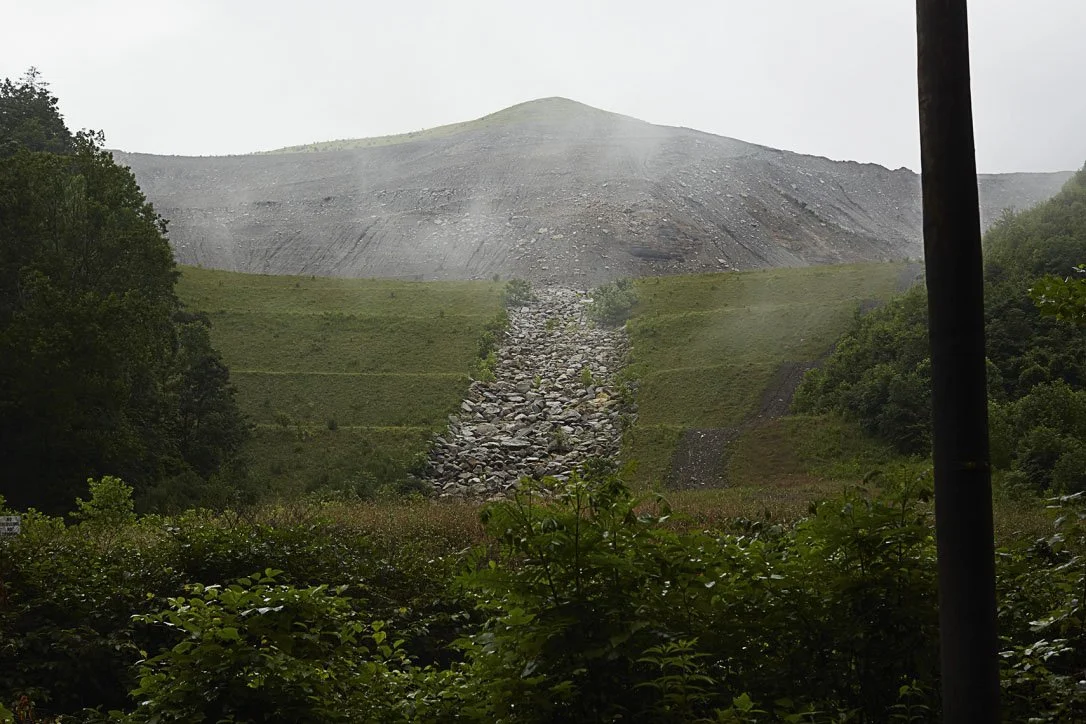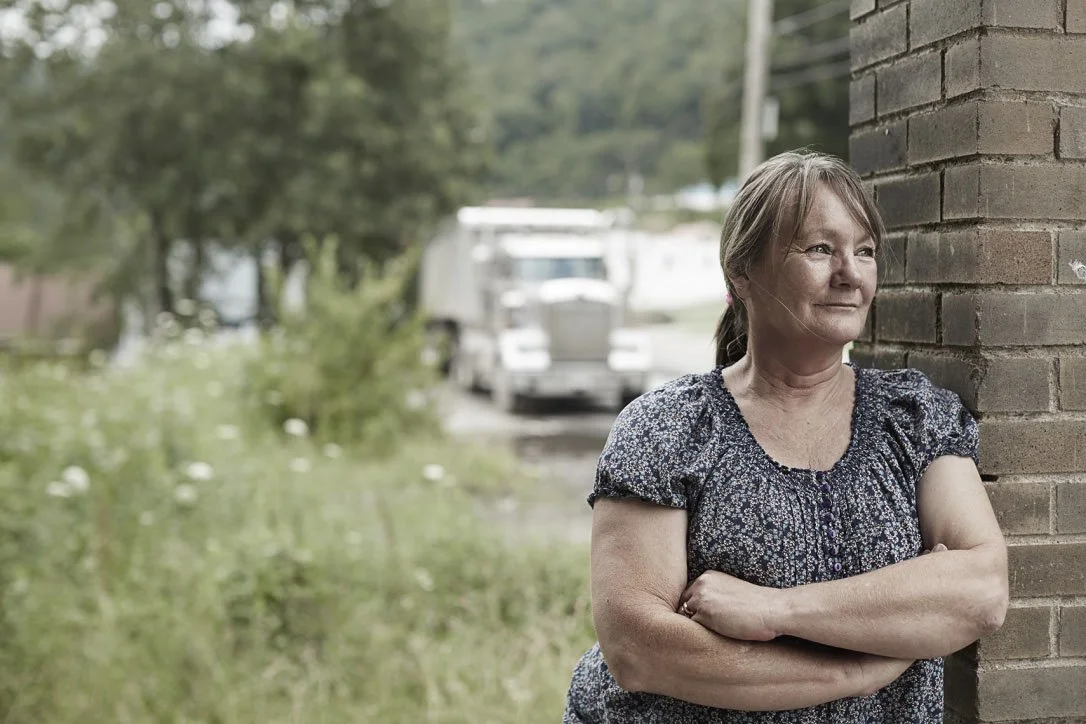Coal operation was West Virginia's biggest employer. Abundance of high quality coal in the Appalachian hasn’t served its people well. The industry is harmful to the environment and it is so much poorer in both wealth and well-being than the rest of the US.
The Appalachian Mountains are some of the most biologically diverse regions in the world. Biodiversity is extremely high in terms of both the variety of different species and the abundance of each species. Nearly 10,000 species are already known to exist here, with more discovered each year–some of which are new to science. Unfortunately for the environment, the Appalachian mountains in West Virginia also represent some of the highest quality coal found anywhere in the USA.
For over a century, coal has been one of our main energy sources. It is a big part of the very foundation our industrialization is based on. Coal has a rich history, based on prosperity and progress, but also for its devastating effect on humans and the environment. Mining in general and surface mining in particular, is the first step in the dirty life cycle of coal. Contaminated water supplies, destroyed forests and soils, are among the problems; burning coal is a leading cause of smog, acid rain, and toxic air pollution.
Coals’ unique position has been spurred by being widely accessible and cheap. Now other energy sources have gained market shares, due to investments in technology and innovations, where the coal industry has done very little. On the contrary the response has mostly been defensive. Instead of investing in carbon-reducing technologies, making mining safer, cleaning up after reclamation, etc. the coal industry continue to fight regulations and help fund lawsuits trying to stop policies that discourage the use of coal. The industry wanted to maximize its profit, without really thinking about a more sustainable future, and the numbers don’t look good. In March 2016 coal accounted for only 24% of electricity generated down from 33% in March 2015 and 41% in March 2014. Today the numbers are further down to less than 20% (2022)
Despite the dire numbers, the conduct of the coal industry has not changed. They keep on producing coal, without any regards for the environment. A relatively new method in coal mining is mountain top removal (MTR). It is a form of surface mining that involves the mining of the summit or summit ridge of a mountain. Coal seams are extracted from a mountain by removing the land, or overburden, above the seams, and it has devastating effects on surrounding nature and humans. According to the Surface Mining Control and Reclamation Act of 1977 to protect the environment, the topsoil is removed and set aside for later reclamation. Over the last twenty years MTR mining has become very prevalent in the Appalachian mountains, being a major concern for the environment. However, coal companies are often given waivers and reclaim the mountain with "topsoil substitute”, meaning the mountain can’t be brought back to what it once was. Locales compare it to a painter, spraying green grass on a canvas. Mostly, the original topsoil with all the trees and rocks are dumped into valleys, being responsible for burying more than 2,000 miles of vital streams, and poisoning many more. Another concern is the massive amount of coal sludge sitting in impoundments. The biggest is the Brushy Fork coal sludge impoundment near Marfork in western Raleigh County of West Virginia. It has a capacity of more than 8 billion gallons, raising local concerns that the dam will break from MTR blasting. In case its 910 feet tall dam, taller than the Hoover Dam, should fail, the resulting flood would be catastrophic, burying many communities.
MTR is destroying the Appalachians. A mountain after it has been reclaimed. 500 mountains have been severely impacted or destroyed by MTR
Landscape after mining activities ceased.
Water downstream of MTR mines has significantly higher levels of sulfate and selenium, and increases in electrical conductivity, a measure of heavy metals.
In 2012 The Marsh Fork Elementary School was closed down. A massive silo, where processed coal was once loaded onto train cars, sits right next to the school and its neighbor is Brushy Fork coal sludge impoundment. The nearest MTR mine was five minutes away. The school was perpetually coated in a thin layer of dust, giving 80 percent of the area's children respiratory problems.
With a coal industry standing on its last legs, makes it even more desperate and careless in its fight for survival. More than 500 mountains in the area have already been sheared off and MTR is estimated to produce just 5 to 10 percent of total U.S. coal production. “That’s why we keep on pushing for regulations,” says Vivian Stockman, a project coordinator and in charge of media outreach and communications at OVEC; a grassroots organization dedicated to preserve and protect natural heritage.
In Naoma, a little village in the heart of coal country, in a defunct diner, an anti-surface-mining group called Coal River Mountain Watch, have their office. There I meet with Debbie Jarrell. Debbie is born and raised in Rock Creek, on the Marsh Fork tributary of the Coal River in the Appalachia. She’s a mother and a grandmother. Her family settled here back in late 1700th. They were farmers. When coal was discovered in the valley in the 1800th some of her ancestors became miners and her family have continued to work in the industry. Debbie’s grandfather died of black lungs back in the 1960’s, her father retired from one of the prep plans in the area and her son in lawn has worked as a miner until he was laid off just before Christmas last year. So without a doubt the mining industry has provided jobs for many families, including Debbie’s. However, that’s not the only thing that matters in this area. Debbie’s grandmother taught her that as along as we take care of the earth, it would take care of us. Back then they always put up their garden to provide for themselves. They did whatever it took to be one with nature. Today people are divided from that. There’s no reason to go out and gather or grow your own food, when you can just go to the store and buy it. People have stopped thinking about where the food comes from and how important it is to live where the environment is clean enough to grow your own food. Debbie argues that people have to start to think about how we want to leave the earth to our children and grandchildren. Back when Debbie was a kid, you always knew you could kneel down and get a drink of water out of one of the many mountain streams. Today you can’t get a drink in these streams whenever you want to, because of the pollution and contamination from MTR mining. So Debbie has made up her mind. She wants to make a difference and is now co-director at Coal River Mountain Watch. Their mission is to stop the destruction of communities and environment caused by MTR. Improving the quality of life in the area and help rebuild sustainable communities is the highest priority. Though a thorough clean up paid by the coal industry is out of the question, since most of the big coal companies, have gone into bankruptcy protection. Debbie tells me it is done deliberately. She wonders how it is possible for the companies to continue their operations, but are no longer obligated to pay for clean up and maintain decent jobs with the pension and health care benefits the retirees were promised and have earned.
Debbie Jarrell, co-director at Coal River Mountain Watch.
The coal industry has not brought prosperity to their workers. West Virginia remains one of the poorest states in USA.
The seemingly unlimited power the coal mining industry has had and according to organizations like Coal River Mountain Watch, still has, dates back to the late 1800- early 1900. Back then big land corporations started to buy up properties. There are stories describing how land were stolen or swindled from local folks. The method was simply having people handing over a signed legal deed to the assessor who then gave it to the corporation representative, for nothing more than a horse or a bottle of liquor as payment. Thousands of acres of land, were obtained by big land corporations, using these methods.
According to Debbie, this area has to the coal industry been an area to take things out of, without putting anything back. This behavior has been possible because of the mentality of the locals, where you mind your own business. As long as the industry can provides jobs, you don’t ask questions, despite an industry not caring about its people and the environment.
Justin White, another local activist, also talks about the lack of commitment from the coal industry and how it does not live up to their responsibilities about protecting the environment. Health issues and in particular the pollution of the water is of great concern. He shows me samples of polluted water taken throughout the coal producing region of Appalachia. Being an 11th generation native raised in a coal mining working family in Boone County, a coal producing county in Southern West Virginia, Justine knows all about its history and heritage. Originally being a strong supporter of coal, he started to change his views, when he discovered the many devastating effects of MTR. Many areas has seen increased flooding, a growing rate of poverty and entire communities erased. Like Debbie, Justin feels he’s obligated to convince people to change their perception about the coal industry.
Justin White, a local activist, standing with his father's helmet.
Drinking water samples taken throughout The Appalachia.
How the front sample looks like, when being shaken.
Despite the great effort done by local activists, environmentalists and other like minded grassroots, the question remains if it is enough to make the coal industry change its way of doing business. With the industry in rapidly decline, operating in one of the poorest region in USA, unfortunately seems to be the right environment for “the perfect storm”. The question remains if and when regulations will come, will it then be too late to restore what remains of the unique nature of the Appalachia.






















